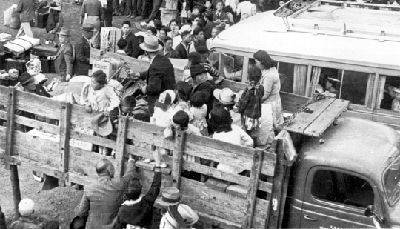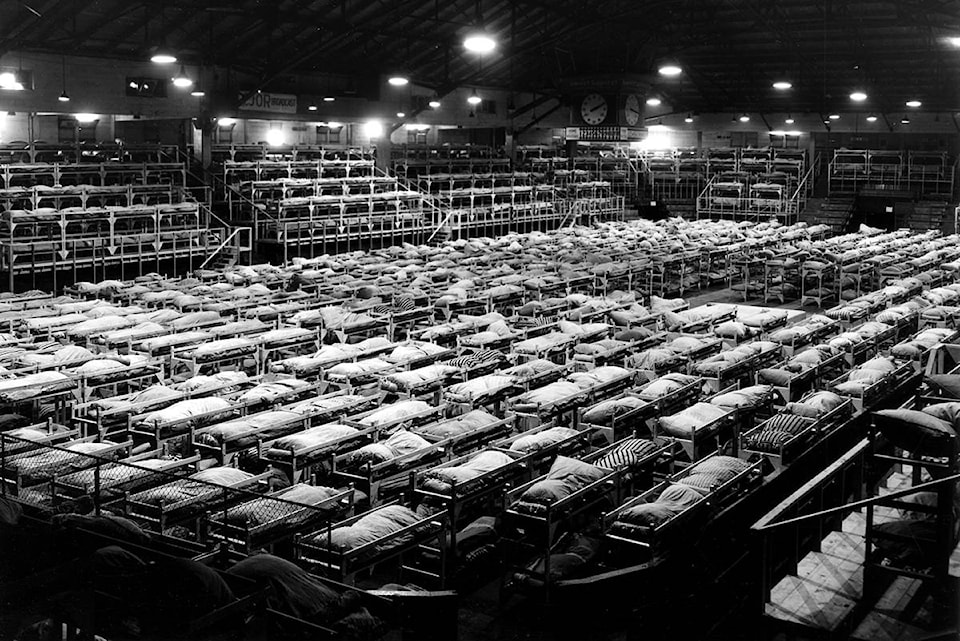This year marks the 75th anniversary of the internment of tens of thousands of people of Japanese descent by the Canadian Government during the Second World War. Though few people may be aware of it today, North Delta once had a thriving Japanese community before racism and the fear of “enemy aliens” operating along our coast robbed them of their property and livelihoods.
To commemorate this dark chapter in our shared history, several members of the Delta Museum and Archives Society contributed to this month’s North Delta History feature to help shed light on the Japanese Canadians who helped build North Delta in those pre-war years.
Check out the rest of the series here.
By: Nancy Demwell and John Macdonald, Delta Museum and Archives Society
Seventy-five years ago, 22,000 persons of Japanese descent were forcibly removed from the B.C. coast.
Canada was at war with Japan, and Americans and Canadians were fearful of sabotage or espionage by Japanese agents. Sixty per cent of these so-called enemy aliens were born in Canada, and another 15 per cent were naturalized Canadian citizens. Two hundred and twenty-seven were veterans of the First World War, some of whom were decorated for their service.
Two hours after the attack on Pearl Harbor, Japanese-Canadian fishing vessels were seized and, over the next following weeks, boats were brought from all over the coast to be impounded at Annieville Dyke, what is now part of Annacis Island. These boats were either sold or scrapped.
North Delta had well over 100 Japanese-Canadian families in 1942. In October of that year, they left behind their homes and most of their worldly possessions and were loaded onto open bed trucks and taken to Hasting Park in Vancouver.
Following this first stage, they were sent to road camps in the Rockies, internment camps in the Interior or to farms on the prairies. Each internee carried a small suitcase with clothes and a few life essentials. They believed that this could only be a temporary measure and their lives would soon return to normal.
Chojuru Furutani and Hanayo Kani were a North Delta family living on Horel Road (now 92nd Avenue) in 1942, where they grew strawberries and raised chickens on their 10-acre farm. Chojuru and their three older children were interned on a sugar beet farm in Manitoba where there was a shortage of farm workers. Hanayo and their four younger children were sent to an internment camp at Tashme (now called Sunshine Valley, just east of the Hope slide on Highway 3). It wasn’t until 1944 that the family was reunited in Manitoba, eventually settling in Winnipeg after the war.
Miyoshi Goto, her husband and their five children lived on Gibson Road (now 90th Avenue). Miyoshi’s husband had a breakdown with the stress of the evacuation and was sent to Essendale Mental Hospital. Miyoshi and her five children were sent with other Delta Japanese families to work on sugar beet farms in Lethbridge.
The beet farmers came to the train station and picked the Japanese families that they wanted for farm laborers. Miyoshi and her five children were not selected, so they were sent to the internment center in Slocan, B.C. Her son, Teruji, was allowed to miss school and work for the family as the male supporter of the household. He was 15 years old.
Taeko Kawata and his wife Shizuoka lived on Horel Road. Taeko was born in Hawaii and Shizuko was born in Vancouver. They too were sent to labour on a sugar beet farm in Manitoba. Their accommodation was a one-room cabin which they shared with their four children.
It was six years before Japanese-Canadians were allowed to return to the B.C. coast after the Japanese surrendered in 1945. Few of North Delta’s Japanese residents returned. Their boats, farms and homes were sold or given to returning veterans by the federal government or the proceeds went into general revenue.
editor@northdeltareporter.com
Like us on Facebook and follow us on Twitter

